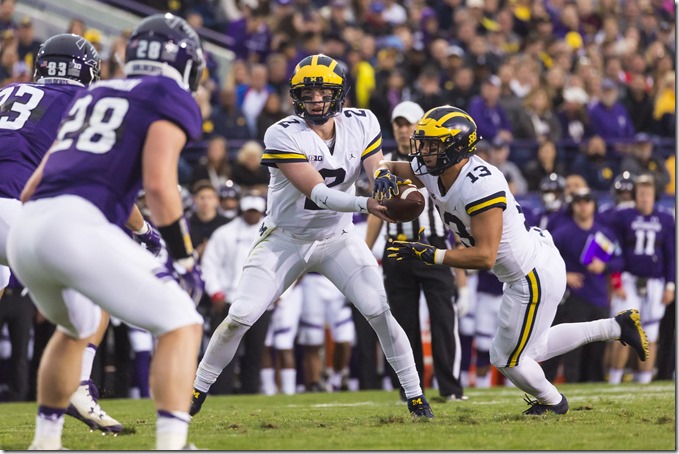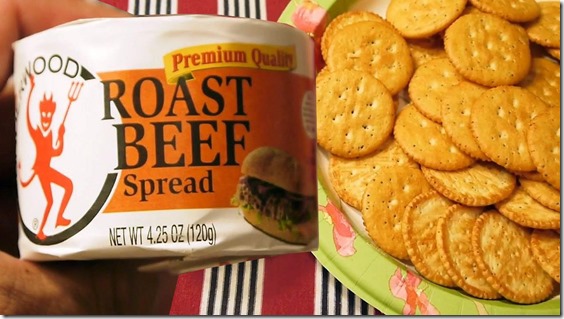i am a spread zealot no foolies

Previously: Podcast 11.0A, Podcast 11.0B, Podcast 11.0C. The Story. Quarterback. Running Back. Wide Receiver. Tight End. Offensive Tackle. Interior OL. Defensive End. Defensive Tackle. Linebacker. Cornerback. Safety. Special Teams.
1. So what is this offense going to look like?
make eyes useful [Patrick Barron]
A large chunk of it is going to be bog-standard spread offense. Even if Michigan was keeping things under wraps during the spring game, they weren't running plays they don't expect to have in the offense this fall. And a lot of those plays were just dropback passes or conventional-looking zone reads.
Michigan did mix in a number of plays that hinted at an evolution of last year's arc read system and a new frontier in misdirection and wide plays. I thought this four-play series culminating in the McCaffrey rushing touchdown was enlightening:
The camera work left a lot to be desired, so here's the high-level view:
- Two TEs with Eubanks off the line of scrimmage; Eubanks pulls across the formation for split zone. This is part of the arc package; I remember getting frustrated with McKeon in the MSU game for not executing this. VanSumeren rips off a chunk run.
- Twin TE pistol set on which Michigan tries to run a stretch and gets swamped. RPS loss for O.
- 2 TEs still but Michigan motions the TEs out for a four-wide look and runs speed option to the field.
- Twin TEs again. Speed option or a flare is threatened one way, drawing the linebackers; after a beat McCaffrey runs a QB pin and pull the other way for a touchdown.
[After THE JUMP: lots of Gattis stuff.]
---------------------------
[QUICK HURRICANE HARVEY NOTE: Major ongoing natural disasters are usually beyond our scope, but Houston has become an all-hands-on-deck situation. MGoStaff writer Alex Cook is still holed up in his apartment and has assured us he is safe. Close friend of the site Jane Coaston has family there. Over 3,000 readers are in it too.
The charities out there to deal with such things are blowing through everything they’ve got. If you’d like to help, some good charities are All Hands (they train & equip volunteers), the American Red Cross, Samaritan’s Purse (Christian, International), Food banks (that’s a list from the Houston Press), Americares (provide medicine and basic supplies), SBP (ongoing recovery volunteering) the Houston SPCA (animal rescue—bc evacuation centers don’t let people bring their pets), and NECHAMA (Jewish flood response organization I volunteered with when Dearborn and Oak Park were inundated a few years ago).
If you’d like to go down there and help the Red Cross and others above are taking on-the-ground volunteers. I can’t think of a better way to justify making that Dallas game after all.]
---------------------------
a preview
They say football is a game of inches. But in football physics space and time amount to the same thing. The inches between a tackle and a broken one, or momentum vs time for the defense to rally, are the real difference-makers. All of that scheming, development, recruiting, and training is about finding those inch-seconds. And we’ve been telling you all offseason that we think the way Michigan plans to do that is to play with some gigantic dudes who will push you off the ball, and spread ‘em out.
Maybe we should explain why.
[after the jump]
What is the difference between this run:
…and this run:
?
If you guessed "the one Harbaugh/Drevno were coaching got yards and the one from Hoke/Borges didn't" you win a running theme of the 2015 offseason. The results are certainly stark; why that's true is what we're interested in.
The Power Play
These are both the same play by the offense, and the same play Brady Hoke promised to make into Michigan's base because it is the manliest of plays. It is Power-O, the one where you pull the backside guard and try to run between the tackles.
You can click for biggers
The play is relatively simple to draw up and complex to execute because it uses a lot of the things zone blocking does, including having the blocking and back react to what the defense does. For all the "manball" talk this isn't ISO, where you slam into each other quickly. Depending on how the coach wants to play it and what defensive alignment you see, the basic gist is to get a double or scoop of the playside DT and kick out the playside DE, then have an avalanche of bodies pour into that hole—if the defense is leaping into that gap you adjust by trying a different hole further outside. Leaving two blockers to seal off the backside, one blocker, usually the backside guard, pulls and becomes the lead blocker—it's up to him to adjust to what he sees when he arrives.
You can run this out of different formations with different personnel, and the one immediately apparent difference in the above diagrams is Michigan was more spread—a flanker (Z) is out on the opposite numbers and the strongside is to the boundary; after the motion this is an "Ace Twins". Stanford ran this with a heavy "22-I" formation, meaning two backs (RB and FB) and two tight ends (Y and H) in an I-form. The benefit Michigan gets from its formation is the guy Stanford would have to block with its fullback Michigan has removed from the play entirely by forcing him to cover the opposite sideline.
What Stanford gets in return for its fullback is matchup problems: the open side of the field is going to be two tight ends and a fullback versus two safeties and a cornerback. Run or pass that can go badly for the defense as these size mismatches turn into lithe safeties eating low-centered fullbacks, and dainty corners on manbeast TEs.
In War of 1812 terms, Michigan is the Americans, sending the fast-sailing frigate Essex in the Pacific so the enemy has to move ships to the Galapagos instead of harassing the Carolinas. Stanford is the British, parking 74-guns ships of the line where engaging them cannot be avoided and trusting the outcome of any forced engagement should turn in their favor. The point is both work to the advantages and disadvantages of the talent on hand. (In this analogy Borges is a guy trying to use Horatio Nelson tactics with a Navy of sloops and brigs).
That being said, it still works as well as anything—people did in fact score points before the spread, and those who scored a lot of them could do so by keeping defenses off balance and with good execution. As we'll see both of those factors played a big role.
[after the jump]




51